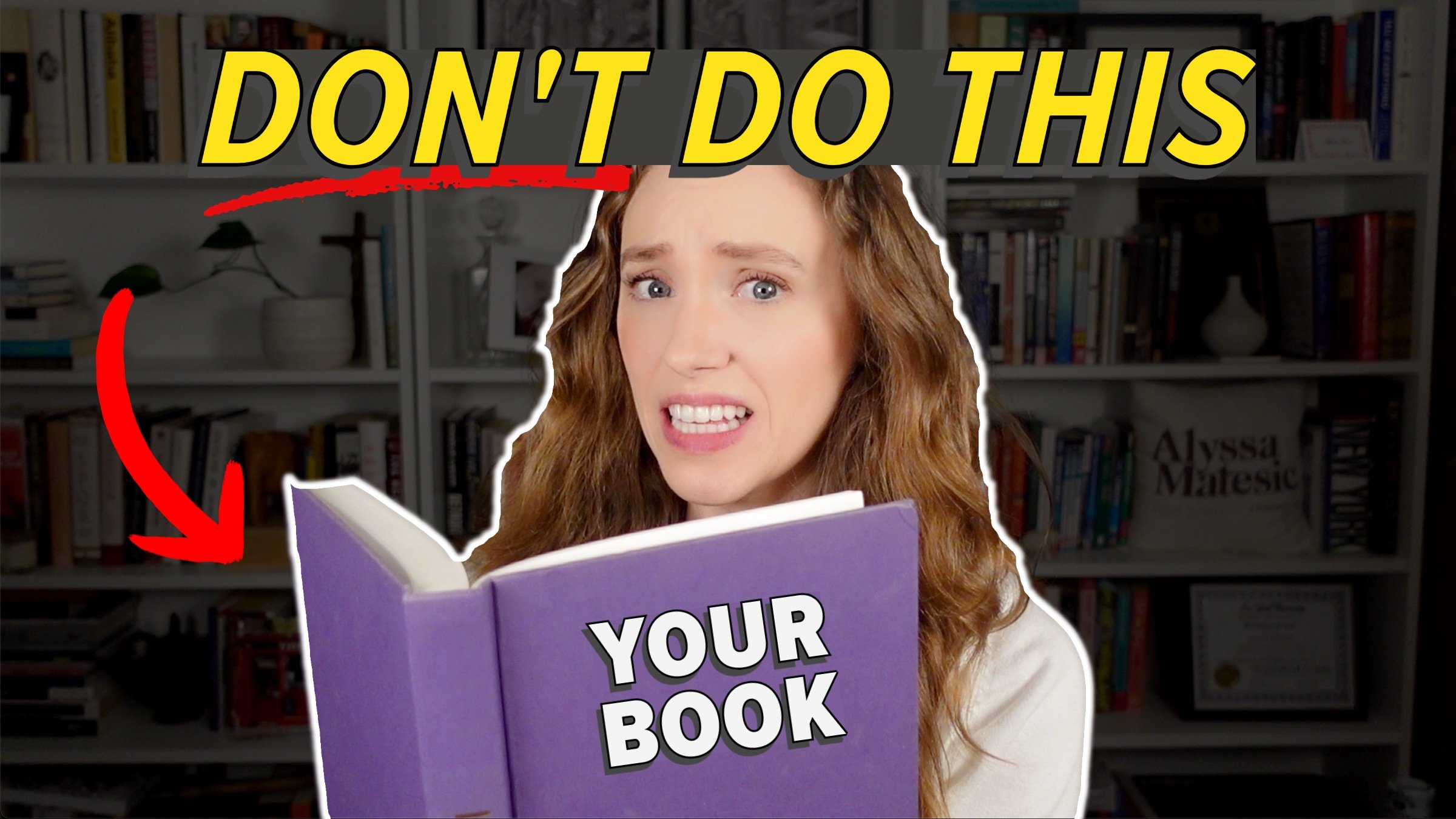Self-Editing Tips, Tricks & Hacks to Revise Your Novel Like a Pro
HIT PLAY OR READ THE POST BELOW:
Editing your own writing can be painful. After all, you put all of those words on the page for a reason. But learning how to self-edit effectively is critical to helping your story reach its maximum potential and resonate with readers. If you've been struggling with revisions, you’ve come to the right place, because I’m going to give you all my top self-editing tips you can easily implement today with your work in progress.
Many of these self-editing hacks come from my experience and background as a professional developmental book editor, and many of my clients use these tricks and techniques to great success.
1. Read Your Work Aloud
It may sound tedious, but reading each and every word of your manuscript aloud is a really powerful self-editing technique. It's going to help you identify awkward turns of phrase because anytime you trip up on your own words, you can flag that as a place for you to revise and make that language flow more smoothly. It can also help you track unnecessary repetition in your language or areas that are unclear.
Reading your work aloud can be especially helpful in writing more natural-sounding dialogue. By reading your work aloud, you're going to pay much more attention to the nuances and flow of your language, and it's going to surface things in your writing that may have otherwise been unnoticed.
Admittedly, this technique can take quite a while to execute, especially if you want to read the entire book aloud. I recommend breaking it up into smaller chunks — perhaps you read one or two chapters aloud every night before bed or every morning, whenever you have the time. And if the idea of reading the entire manuscript aloud seems too overwhelming, then you can flag a few passages in particular that you've been struggling with. Again, dialogue exchanges that you've been struggling with could be really helpful to target here.
2. Start a New Document
The next self-editing tip is to start a brand-new document. Because I'm a developmental editor, I often work with authors through big-picture structural changes to their story, and in these cases, it can be super helpful to work on your new draft in a totally different document, separate from the one that you've been working in. I'm talking about opening up a brand-new blank page here.
Then, once you have this blank document in front of you, you can retype or copy and paste material from your original draft into the new version. This process forces you to engage with your narrative on a deeper level and justify the placement of each and every sentence because you're having to either retype or at least copy and paste all the scenes. I also have authors who take this a step further and handwrite their next draft totally from scratch. This, admittedly, takes a lot of stamina, but some authors swear by this method.
Whether you choose to retype your story or rewrite it manually, having the blank page to play with is going to unlock another level of self-editing for you because you're no longer tied to what was on the page in the previous draft, and you're free to implement those bigger picture revisions to your story.
3. Change the Font or Format
This is probably the easiest self-editing tip you can implement right here and now. In fact, why don't you pause reading this article, open up your work in progress, and just change the font? You can always change it back after.
Altering the font, or even the spacing or the layout of the text, is going to force your brain to look at it as a new document. Having that visual cue that something is different is going to help you find things in the draft that you have previously not seen before.
You can also play with the format, so consider printing out your manuscript and looking at it physically, or you could switch your word processing software. If you use Word, you could use Pages, or vice versa, or you could convert to a PDF. Personally, I like to use Word's Focus feature when I'm editing or reading. I put the Word document in a full-screen view and then use the Focus view, which really forces me to look at the page by itself with no other distractions.
Regarding font changes, some authors swear by switching their manuscript into Comic Sans because allegedly this font is easier on the eyes. Whatever you do to change the format or style of your manuscript, you're going to see sentences and passages that you've run over time and time again truly with new eyes, which is exactly what you want when you're self-editing.
4. Use Placeholders
Sometimes you might come across a passage that you just don't know what to do with quite yet. That could be because the language is tricky or you're unsure about a specific detail you're including. In these cases, rather than letting yourself get hung up right here and now on this passage that is baffling you, just put in a placeholder and return to it later and allow yourself to continue editing smoothly.
The placeholder could be the capital letters “TK” or something like “XXX” — just something that is easy for you to then search for in the manuscript and find again. This technique works really well both for line-level issues, if you're getting hung up on the grammar or the image in a specific line, and also for content issues, such as if you know you want to add a setting description or you want to strengthen a scene but you don't know how you want to do that quite yet. For now, put in the placeholder and allow yourself to come back to those passages when you have more time to focus on them specifically.
5. Create a Reverse Outline
My final self-editing tip is to create a reverse outline of your book. A reverse outline is a separate summary document outlining what happens in every scene and every chapter in your book. This resource can take a bit of time to put together, because you need to go back through your manuscript with a fine-toothed comb to create it. But once you have it, it's going to be such an incredible resource for you.
You’re going to be able to see the structure of your book at a glance and take a look at your character arcs, pacing, subplots and how they develop, etc. It can help reveal any gaps or inconsistencies throughout your book as well as unnecessary scenes, storylines, or characters that could be cut to make the narrative tighter and more cohesive. I highly, highly recommend incorporating reverse outlining as part of your self-editing process.
I hope these self-editing tips, tricks, and hacks make the process feel less daunting and that you're energized and inspired to return to your manuscript.
Thanks so much for reading, and happy writing!






